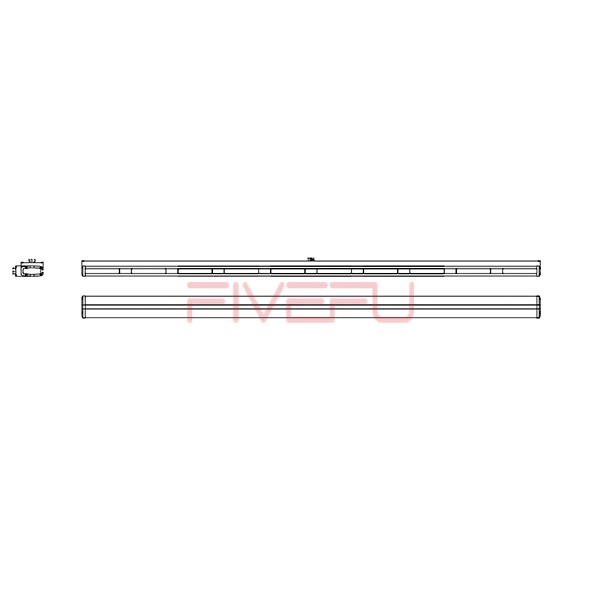Vehicle lightbars installation mode
Vehicle lightbars can be installed using various methods depending on the type of vehicle, the specific lightbar design, and the desired positioning for optimal visibility. Here are common installation modes for vehicle lightbars:
Roof Mounting: Roof mounting is one of the most common installation methods for vehicle lightbars. The lightbar is attached to the roof of the vehicle using mounting brackets or a roof rack. It provides excellent 360-degree visibility and is often used on police cars, fire trucks, and emergency response vehicles.
Grille Mounting: Some vehicles have a grille or bumper area suitable for lightbar installation. The lightbar is securely attached to the front grille or bumper using specialized mounting brackets. This positioning allows for front-facing visibility.
Interior Mounting: In some cases, especially for undercover or unmarked vehicles, lightbars can be installed inside the vehicle behind the windshield. This installation mode is less visible from the exterior but still provides forward-facing visibility.
Rear Deck Mounting: Rear deck mounting involves attaching the lightbar to the rear deck or trunk of the vehicle. It is commonly used on police cars and law enforcement vehicles to enhance rear visibility.
Magnetic Mounting: Magnetic mounting is a temporary installation method often used for vehicles that do not require permanent lightbar fixtures. Magnetic mounts secure the lightbar to the vehicle’s roof using strong magnets. This method is popular for volunteer firefighters or other temporary emergency responders.
Mirror Mounting: Some vehicles have mirror mounts designed to accommodate smaller lightbars. Lightbars can be attached to the side mirrors, providing additional visibility from the sides of the vehicle.
Visor Mounting: Visor mounting involves attaching the lightbar to the sun visor inside the vehicle. This method is commonly used for smaller lightbars that provide forward-facing visibility.
Hood Mounting: In some cases, lightbars can be installed on the hood of the vehicle using specialized brackets. This positioning allows for front-facing visibility without roof obstruction.
Push Bumper Mounting: Vehicles equipped with push bumpers, such as certain law enforcement vehicles and trucks, can have the lightbar attached to the push bumper for front-facing visibility.
Custom Mounting: Depending on the vehicle’s design and the specific requirements, custom mounting solutions may be employed. These can include mounting the lightbar on roll cages, headache racks, or other custom-built structures.

How many sizes of vehicle lightbars?
Vehicle lightbars come in various sizes to accommodate different types of vehicles and mounting options. The specific sizes available can vary depending on the manufacturer and the model of the lightbar. However, here are some common sizes of vehicle lightbars:
Mini Lightbars: Mini lightbars are compact and suitable for smaller vehicles like sedans, SUVs, and utility vehicles. They typically range in size from about 9 inches to 24 inches in length.

Mid-Size Lightbars: Mid-size lightbars are larger than mini lightbars and are often used on larger sedans, SUVs, and some trucks. They can range from approximately 24 inches to 48 inches in length.
Full-Size Lightbars: Full-size lightbars are the largest and most powerful options available. They are commonly used on emergency response vehicles like police cars, fire trucks, and ambulances. Full-size lightbars can vary significantly in length, with some exceeding 50 inches or more.
Custom Sizes: Some manufacturers offer custom-sized lightbars to meet specific customer requirements. These custom lightbars can be tailored to fit unique vehicle configurations or mounting preferences.
Interior Lightbars: Lightbars designed for interior mounting behind the windshield or on the dashboard can have varying dimensions, often designed to fit the available space without obstructing the driver’s view.
Specialty Lightbars: There are specialty lightbars designed for specific applications, such as off-road vehicles, construction equipment, or agricultural machinery. These lightbars can have unique sizes to suit their intended use.









